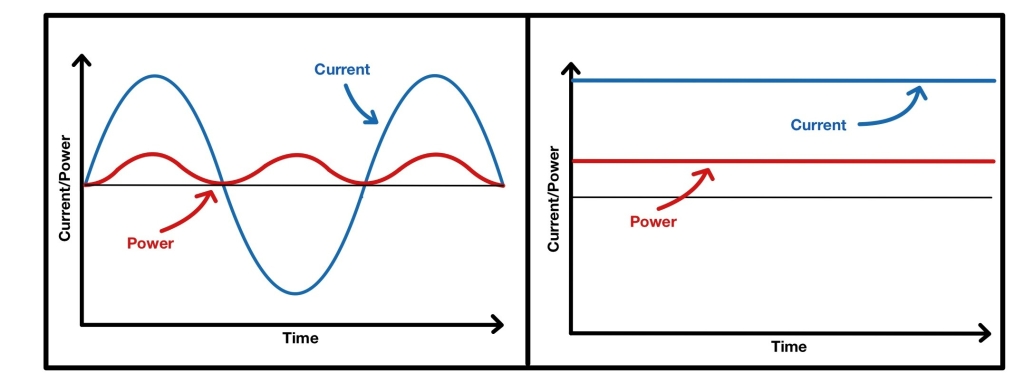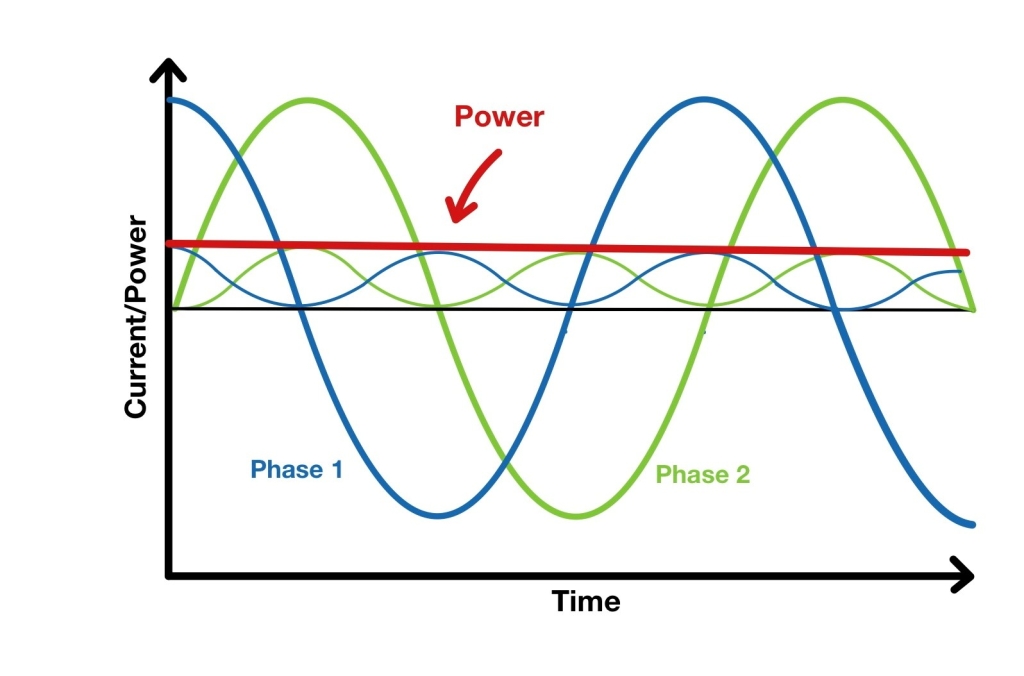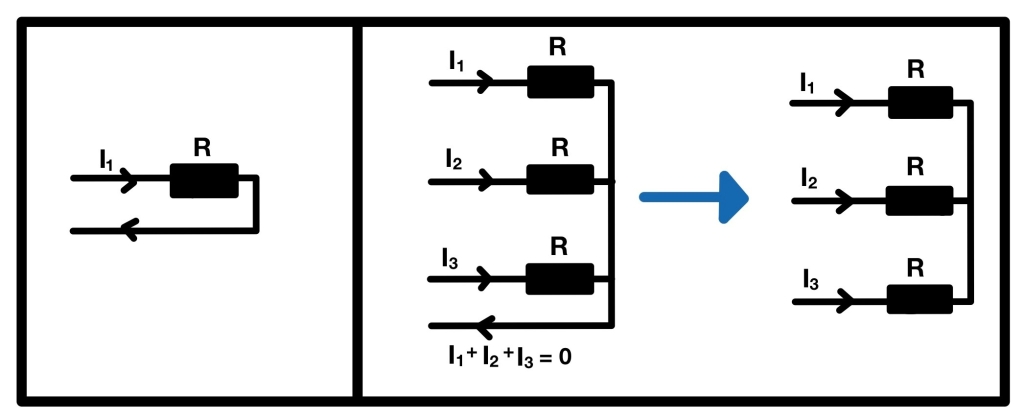Polyphase alternating current, what is it?

Alternating current (AC) is a familiar term to everyone because it is the current type that comes out of an ordinary wall socket. But sometimes a normal socket is not enough. Kitchen appliances such as a stove or oven, do usually use polyphase alternating current (also called polyphase systems or polyphase power). In this blogpost we will explain the reason why this is necessary.
Why alternating current?
Alternating current or direct current? We are not the only ones to ask this question; it was also asked just over 100 years ago at the end of the 19th century. At that time, there was the so-called “war of the currents”, a conflict regarding the supremacy in the power grid. But why was there a “war” between DC and AC? The reasons were the completely different properties of these two types of electricity.
AC current is easy to produce. Nowadays, so-called synchronous machines do this job. There, a turbine (e.g. water or wind turbine) rotates a strong (permanent or electro) magnet and therefore its magnetic field. Electric wires surround this magnetic field. Due to the law of induction (third maxwell equation), an AC current is then generated in the conductor cables. This process is simple and easily scalable.
Also, alternating current is very suitable for energy transmission. Mostly, high-voltage lines do transport electric power. This high voltage is converted into a low voltage in the vicinity of the consumer. Transformers, which work efficiently with AC, do this conversion.
However, direct current also has advantages. For example, DC is generally much safer to handle. Some devices also only work with DC. The reason for this is the way power is transmitted: If alternating current is used, the transmitted power also becomes an alternating quantity. Therefore, the power transmission is not constant but varies. In contrast, direct current transfers power at a constant amount, which has technical advantages.

AC current (left), DC current (right)
By the end of the war of the currents, AC had become the standard for most applications. Today, only power transmission in undersea lines or the operation of certain devices require DC. For the conversion from alternating current to direct current one uses direct current converters.
The advantage of polyphase alternating current
As mentioned, alternating current has a significant technical disadvantage: unlike direct current, the power transfer is not constant. To solve this problem, one can use so-called polyphase alternating current.
With polyphase alternating current, there are several power lines which transmit the energy. Each line carries a current. Two-phase alternating current, for example, uses two lines, three-phase alternating current uses three lines. The alternating currents in the individual lines do also have a time shift.
Now, with polyphase alternating current, a constant power transfer becomes possible. This can be seen well in the case of two-phase alternating current: If the power transfer from the first conductor becomes minimal, the power transfer from the second conductor becomes maximal. Since the powers in the two conductors oscillate in opposite directions, they therefore balance each other out.

Power transmitted by two-phase alternating current
Another advantage of polyphase alternating current is the higher and more efficient power transfer. Three power lines can naturally transmit three times the power. One would think that this would also require three times the amount of material (due to additional wires), but this is actually not the case.
For a single-phase transmission of energy, you need two lines: A phase wire and a neutral conductor. This is analogous to direct current, where you have one line that brings the current to the consumer and one line that carries it away.
With three-phase alternating current, you obviously need three such phase wires. The difference, however, is that you often do not need a neutral conductor. The three offset currents, which flow in the three phase wires, cancel each other out when meeting in the neutral conductor. As a result, the neutral conductor carries no current and one may also omit it.

Single-phase AC (left), three-phase AC (right)
Measure up to 9-phases of power
Nowadays, two-phase alternating currents do only rarely find applications. In contrast, three-phase alternating currents have much more frequent applications, for example in power transmission with high-voltage lines. Some household appliances or electrical machines also require three-phase alternating current.
For the measurement of such three-phase alternating currents oscilloscopes or so-called power analyzers are deployed. Sometimes, however, it is necessary to measure more than just three phases of alternating current. Maybe you are working on a complex project where you have to determine the power of wind turbines? Sometimes it is then necessary to analyze currents and power from other sources in addition to the three-phase AC current. This is then hardly possible with standard measuring instruments. But we, DEWETRON, have a solution for you. Our Mixed Signal Power Analyzer can measure and analyze up to 9-phase power systems simultaneously. With this, and its 18-bit resolution and 10 MS/s sampling rate, you can handle every task.
If you want to learn more about our power analyzer or our other products, visit us on the DEWETRON website or on LinkedIn, Facebook or Twitter. On all platforms we will regularly inform about the latest developments in the world of measurement technology and update about new whitepapers, blogposts or webinars.





